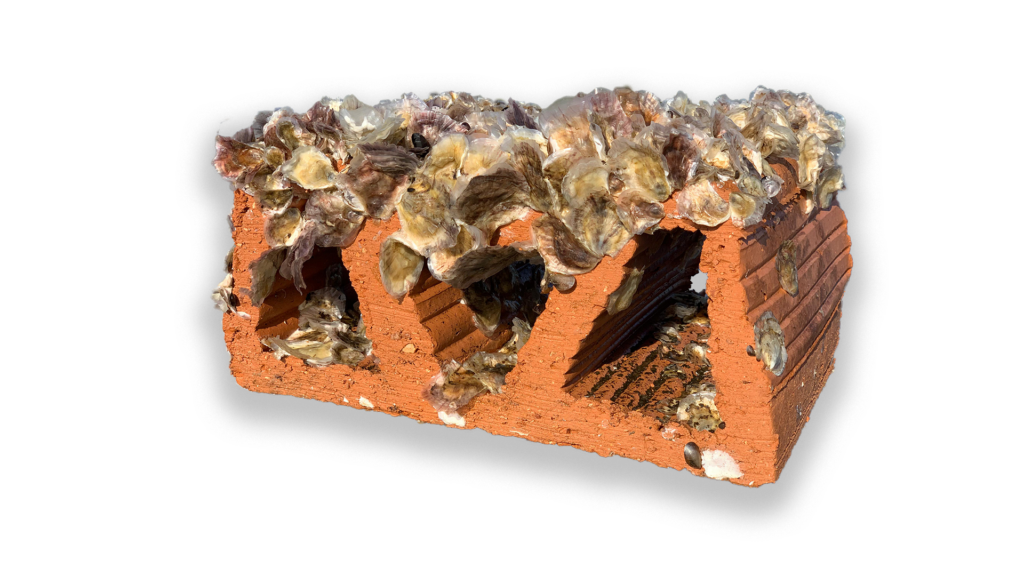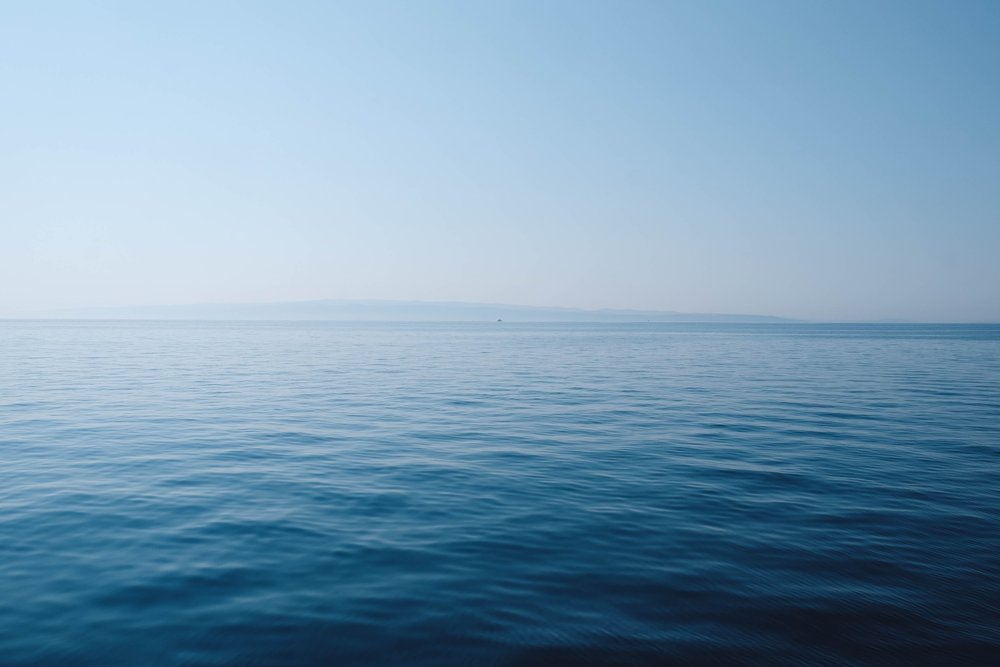FAQ
Most frequent questions and answers
Oyster restoration is quite new for the general public and we are aware that there might be a lot of questions to understand what we do.
Didn’t find an answer to your question? Let us know your question here and we’ll answer you straight away.
About Oyster Heaven
The goal of Oyster Heaven is to regenerate our lost oyster reefs. They used to cover 20-30% of the whole of the North Sea, now they are virtually extinct. The same situation can be found in many exploited seas around the world. We will fix this.
Scale, Standardisation and Profitability – Oyster Heaven was born from trying to understand how to get mainstream pension funds to invest in marine regeneration. With our practical technology centered around our climate friendly, natural material and biodegradable Mother Reef, we have created scale and standardisation by lowering cost. With the sale of ecosystem services we have generated a way to create revenues from oyster reefs without eating them.
The central problem we are solving is about the near extinction of oyster reefs and the scale of regeneration. Globally only 15% of the historic oyster reefs remain, and in the North Sea it is just 5%. Oyster restoration is urgent and necessary at a large scale. Apart from two projects in North America that have been running for decades, oyster regeneration hangs around the 10,000s to 100,000s of oysters mark. This is just too small by multiple orders of magnitude. Oyster Heaven has analysed the market, located the bottlenecks and developed solutions to releave each of them in turn. We have developed a system to return potentially billions of oysters to our oceans.
Marine regeneration needs to happen at large scale and therefore with significant investment. We have developed a system to finance our oyster restoration projects by selling the ecosystem services that oyster reefs provide, particularly nitrogen and biodiversity credits.
The big problem has been lack of funding. It is hard to find institutional investment if you are not providing a meaningful financial return. Natural capital valuation has been the key missing link. However, now that our society is measuring the value of nature and prepared to pay for it, this space has changed dramatically and allowed possibilities that were simply not available even just a few years ago.
About our Mother Reef technology
The basic elements of what Oyster Heaven is doing and using all already exist in academia. What is new is the combination of ideas and the scale. We know that clay is a known effective substrate, we know how to produce bricks at high scale, we know how to sell ecosystem services. However, we know that this on its own is not good enough. As a science based company our team of scientists has done extensive research and we’ve tested our products in the lab and in the field in Denmark with DTU Aqua. The results proved the Mother Reef works, and is a suitable and attractive surface for oysters to attach to. We have completed erosion testing with NETICS to demonstrate that our reefs will biodegrade over a predetermined period of time
Ultimately, because our clay reefs are fired at low temperatures, they will biodegrade in the water after the end of the project period, leaving behind nothing but mud and sand. Oysters will have already created their own reef structure, and because they generate biodiversity. millions of other creatures will live on it too.
No, many organisms, not just oysters, need hard surfaces to survive on. We are creating homes for oysters but they will also be home to millions of other creatures in just a small area. The Mother Reef is natural and biodegradable, so it doesn’t disturb the environment.
About the impact
Whilst our impact on the environment will be small at first, the mosaic of marine oases that we aim to create will start having spillover effects into nearby water quickly. Our reefs will be protected areas for juvenile fish to grow up. The impact on biodiversity will be dramatic, the University of Portsmouth noted 466 different species of creatures present on flat oyster reefs on the south coast of England. We expect the same, and then a huge cascade of beneficial effects in terms of climate adaptation, nitrogen management and coastal erosion protection to name a few.
We perceive no negative impact from our actions other than the carbon emissions that emerge from production and transport. However, these will be more than accounted for through the actions of our company.
We are giving them a new revenue stream and type of work to go alongside that which they already do. They use their boats, sonar, radar, knowledge and love of the water to create marine gardens. Non impactful lobster fishing using cages will still be allowed on the reef in Zeeland, so we expect an increased yield of lobsters to go alongside the cash for their services.
Whilst we are not fitting into any Dutch regulation at the moment, it is an academically verified fact that oysters are highly efficient at managing nitrogen in coastal waters. We believe they should be considered as one of the nature based tools that governments could use to combat excess nitrogen in marine environments whilst managing other tangled issues such as food security and employment for coastal communities.
The health of our oceans and its ability to be a carbon sink, has a huge impact on the environment. Our climate is dependent on the health of our oceans and oyster reefs play a key role due to the ecosystem services they provide.
About oysters
Oysters are one of the key marine biomes globally. They are ecosystem builders, they change the marine environment around them just like coral. They are a living surface for hosts of other marine organisms to use as homes and nurseries. Oysters were chosen because they are at the base of the pyramid and are almost extinct with only 15% of oyster reefs remaining globally. Without them, many other creatures just could not survive.
150 years ago, oysters were just a cheap source of protein that used to be eaten by the working class. We ate them to virtual extinction without realising the damage this would cause on the environment.
Oyster reefs are nearly extinct and do not regrow easily on their own. If we don’t do anything, our oceans won’t be able to benefit from their crucial ecosystem services. As a result, excess nutrients will remain in the water and algal blooms will become a regular event that provokes the death of fish and marine ecosystems. Oceans will stop being a carbon sink and start being a source.
Nowadays, nearly all oysters served in restaurants come from aquaculture. We believe that every extra oyster in the water has a positive benefit so the more demand for aquaculture oysters, the better.
About our projects
There is a wide network of organisations that we are working with now from both the business perspective and also the pilot projects happening in The Netherlands and the Chesapeake Bay in the US. These range from large scale businesses, universities, NGOs, marine research centers, local government and fishing communities. Among others, we have the support from WWF, Rewilding Britain, The Seaweed Company, Stichting Zeeschelp, Blue Oyster, AWI, Kyeema Foundation, Blue City, Generous Minds, Wienerberger, Hoares Bank, Palladium.
Yes, anywhere in the world that used to have oyster reefs (which is virtually everywhere). Our Mother Reefs can be produced everywhere in the world, allowing for projects in other locations with a low carbon footprint and at low cost.
We want to develop large scale projects, with a minimum of 3.75 million oysters to start. Our goal is to restore oyster reefs to their previous extent – in the North Sea, for example, this was 20-30% of the sea floor.
It will vary depending on local conditions. We calculate an approximate cost of 0,25€ per restored oyster, compared to other projects ranging from 20-1000€ per oyster.
While we wish for a world with zero emissions, it is unrealistic to think that this is possible in the short term. We are driven by a vision of a sustainable future where society can continue to thrive in harmony with the environment. To help achieve this vision, we have established a set of strict and principled criteria that must be met by organisations in order to purchase credits generated by our oyster reefs. We will only partner with organisations that have an active proven commitment to sustainability, provide vital services for society (e.g. food and homes), and we will only pair them with oyster reefs in the same area where their activities are carried out.
We absolutely don’t support greenwashing. We want to support vital industries to become more sustainable. While we may accept working with organisations that have a negative impact on the environment, we believe that using oyster reefs as one of the tools to manage their environmental footprints is a much more efficient and beneficial solution than using complex human-made systems to do so or doing nothing at all.
We never will help businesses to continue what they are doing as usual. Oysters should only be ever used when there are no other options left. They can service the last 5-10% of unmanagable impact that human technology can not reach. For example, the best water filtration plants can only take out 95% of pollutants, oysters can help with that remaining 5%.
Oysters should only be used to manage unavoidable damage to the environment when all other options are financially impossible. Read this blog for more information about who do we want our oysters to help.
Oyster reefs are great at managing nitrogen and carbon, filtering water and generating biodiversity. An oyster reef can be regenerated in areas where they used to be present before and where we can guarantee their successful growth (> 5 hectares). We consider oyster reefs a smart solution for organisations that need to manage nitrogen waste that leaches into the same watershed where the reef is located.


